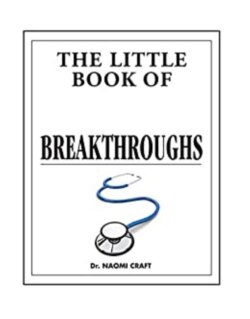Читать книгу The Little Book of Medical Breakthroughs - Dr. Naomi Craft - Страница 14
На сайте Литреса книга снята с продажи.
1590 Holland The Microscope Zacharias Janssen (1580–1638)
ОглавлениеBeing able to magnify an object many hundreds of times has enabled scientists to discover details about the structure of the world around us and more about the inner workings of the body. In medicine today, the microscope is vital to the identification of diseases and infections.
The Romans discovered that if you looked at an object through a piece of glass that was thick in the middle and thin on the edges, it magnified the object. They called these pieces of glass ‘lenses’, from the Latin word lentil, because they looked the same shape as a lentil bean. However, it wasn’t until the end of the 13th century that spectacle makers started to use lenses to be worn as glasses.
It was a Dutch spectacle maker who was probably the first to discover that lenses could be used to make a microscope. In 1590, Zacharias Janssen (1580–1638) put several lenses in a tube and discovered that the object near the end of the tube appeared much bigger.
Most historians believe that Zacharias’ father Hans was also involved in this discovery, as his son would have been very young at the time. Whoever is responsible, this was the first known compound microscope – using two lenses.
Word travelled, and many people were interested in the invention that began to be known as the ‘microscope’. In Italy, physiologist and physician Marcello Malpighi (1628–1694) made a huge contribution to the popularity of the microscope when, in 1661, he discovered the network of capillaries that connect the small veins to the small arteries in the lungs. This discovery reinforced Harvey’s theory of the circulation and finally overturned the previous view that blood was used up by the tissues.
The first compound microscope.
Malpighi also wrote detailed descriptions of the anatomy of the tongue – including the first description of the taste buds, the skin, the brain, the liver and gall bladder and the heart.
In England, the scientist Robert Hooke (1635–1703) was among the first to make significant improvements to Janssen’s original design, although it was actually Christopher Cock, a Londonbased instrument maker, who made the instruments.
Hooke used his microscope to make extensive studies of the world around him, publishing his findings in Micrographia in 1665. The book contains 38 beautifully hand drawn plates including investigations into lice, snow, a razor, a needle, and so on. In cork he saw pores, which he called ‘cells’ – the first description of cells in biology.
Inspired by Hooke’s Micrographia, Dutchman Anthony van Leeuwenhoek (1632–1723), a draper from Delft, began to learn how to make his own lenses. He had previously been using a magnifying glass to count threads in woven cloth. By grinding and polishing, he was able to make small lenses with great curvatures. These rounder lenses produced greater magnification, and his microscopes were able to magnify up to 270 times. Although these microscopes were basically strong magnifying glasses using just one lens, their magnification exceeded the compound microscopes based on Janssen’s original design that were available at the time.
In all, van Leeuwenhoek made many hundreds of microscopes. Even though he had no scientific background he made studies of wood, the cells of plants and the fine structure of animal bodies – he saw red blood corpuscles and blood capillaries and the crystals in gout. He confirmed Malpighi’s findings about the circulation and he made detailed descriptions of nerves, muscles, bone, teeth and hair, 67 species of insect, 11 species of spider and 10 of crustacea.
Even though he didn’t invent the microscope, van Leeuwenhoek is often described as one of the significant people in the discovery, as his microscope was so powerful and he made such significant discoveries with it.
See: Harvey and the Circulation of Blood, pages 29–30
